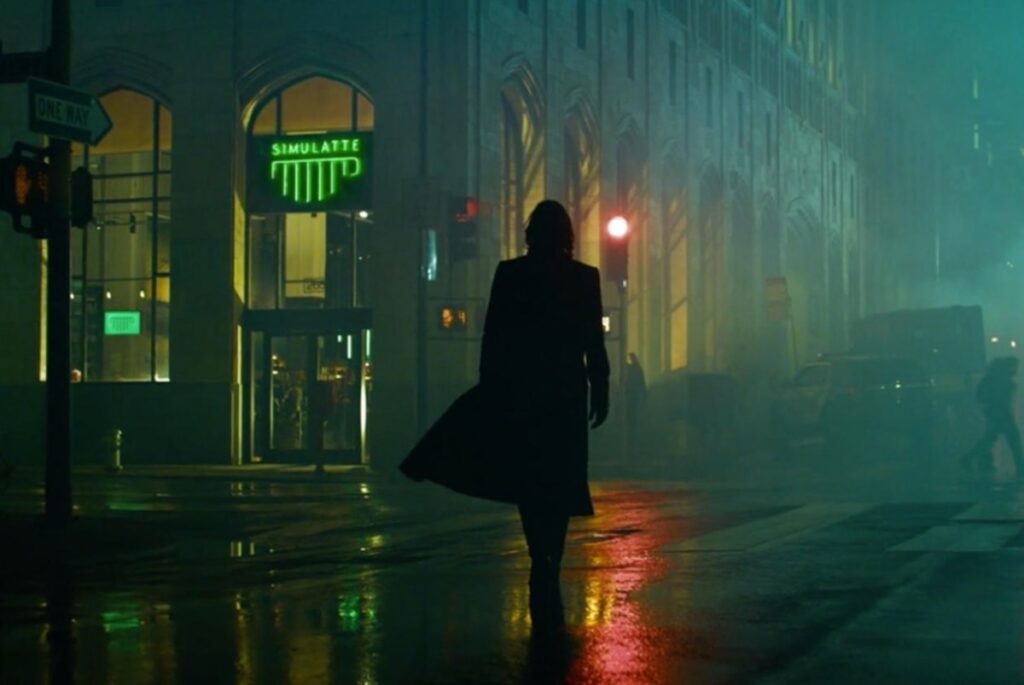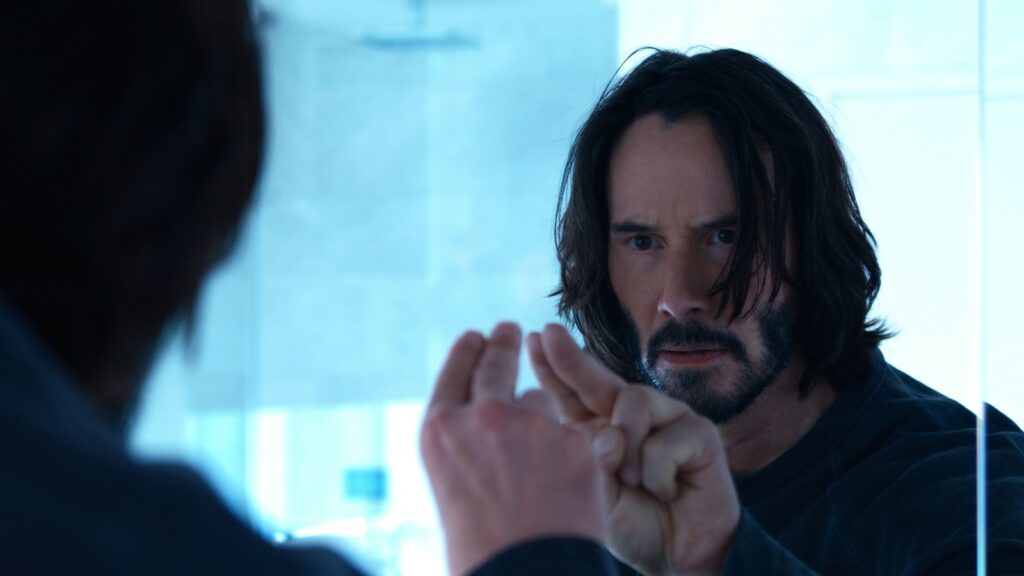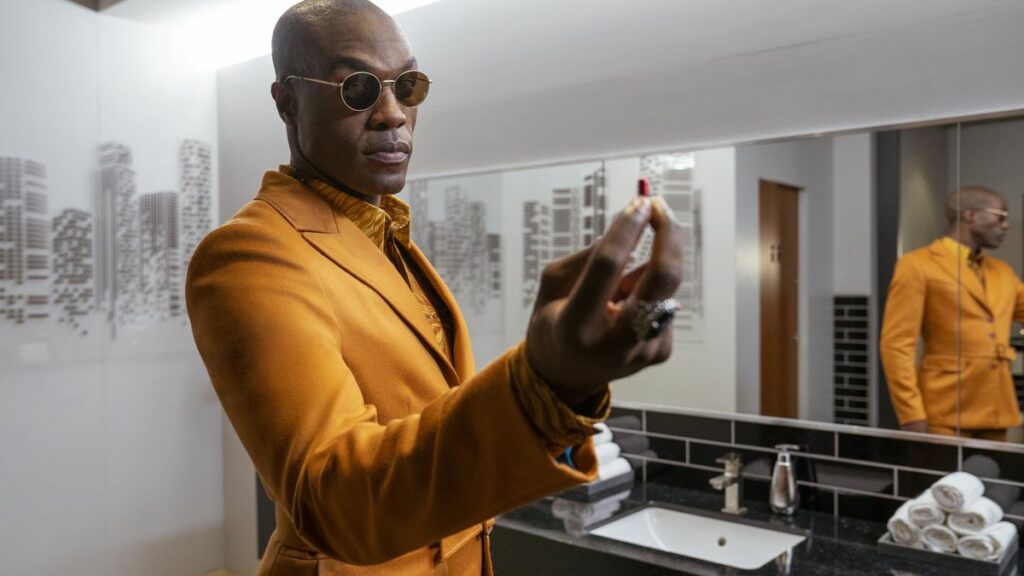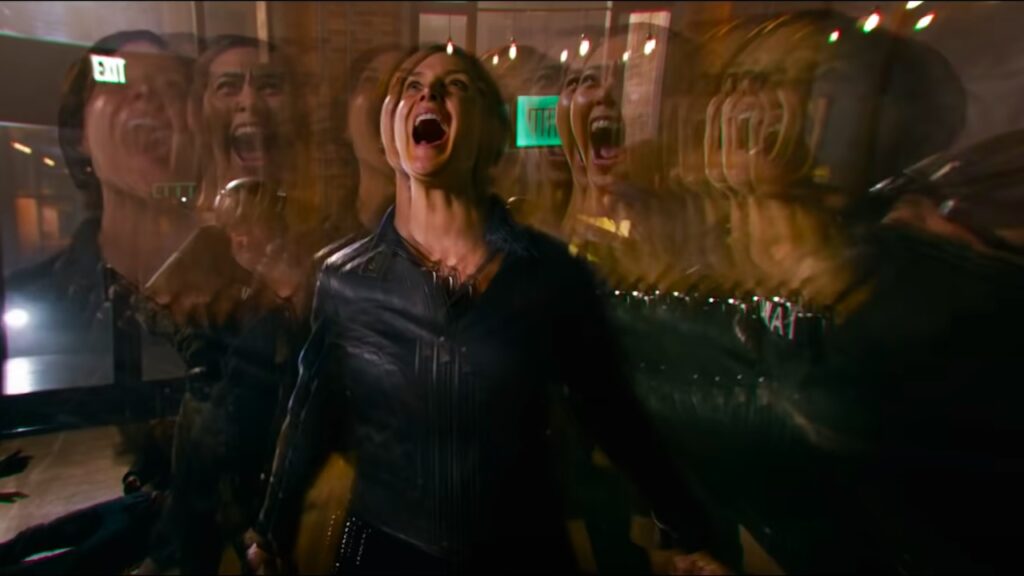Few films can claim to have embedded themselves as firmly in the cultural imagination as The Matrix. The 1999 film and its two sequels, all written and directed by sisters Lana and Lilly Wachowski, made accessible some big ideas on the nature of reality, as well as introducing us to an unforgettable slo-mo action style that countless films have parodied and ripped-off. Equal parts brains and style, it’s probably the only franchise that frequently finds itself referenced both in high school philosophy classes and on the runway.
A quick plot recap: the unassuming computer hacker Neo (Keanu Reeves) is awakened to the fact that his reality is a computer simulation — “the Matrix” — constructed to conceal a terrible truth: that humanity has been enslaved by machines. Guided by Morpheus (Laurence Fishburne) and the Oracle (Gloria Foster and Mary Alice), Neo must discover whether he is “the One” prophesied to end the war between humans and machines. Along the way, he battles the rogue computer program Agent Smith (Hugo Weaving) for the chance at a future with Trinity (Carrie-Anne Moss), the woman he loves. The trilogy leaves Neo to an uncertain fate. “Will we ever see him again?” the Oracle is asked. “I suspect so,” she replies, “Someday.”

In The Matrix Resurrections, we find Neo back where he started — inside the Matrix, living a relatively normal life as Thomas Anderson. This time, however, Anderson is the creator of a hugely popular 1999 video game called — you guessed it — The Matrix. Though now in the process of developing a new game, Binary, his boss Smith (Jonathan Groff) delivers the news that their parent company, Warner Bros.(!), has decided to make a sequel to the Matrix trilogy, with or without its creator’s involvement. And so Thomas finds himself drawn back into the fiction that launched him to stardom — and which he still suspects might not be a fiction after all.
Resurrections’ meta approach — it’s a Matrix sequel about making a Matrix sequel! — is hardly subtle, but it does allow for an interesting, self-conscious meditation on why this film should exist in the first place, especially in the context of our IP-driven, nostalgia-obsessed contemporary media hellscape. (Let’s not forget that Resurrections is not the first film this year to use archive footage from the original Matrix — that would be Space Jam: A New Legacy.) More pressingly, you get the sense that Lana Wachowski — directing without her sister for the first time — felt that subtlety was a luxury she could not afford in making a new Matrix sequel. In recent years, The Matrix’s notion of “taking the red pill” has been co-opted as a central metaphor for various misogynistic internet communities associated with the alt-right. That’s not to mention those who have taken its notion of a computer-simulated world a little too literally.

The Matrix Resurrections might be seen as wrestling the franchise away from such interpretations, or at least such audiences. It’s also, however, keen to reflect on the allegorical openness of its simulation/reality narrative, and why it struck such a nerve. One montage sees bro-geek game developers arguing over why The Matrix succeeded (“it f-ed with your head,” offers one employee, while another simply exclaims “bullet time!”) and what it was actually about (“trans politics” / “crypto-fascism” / “capitalist exploitation”). In truth, Wachowski implies, what we see in The Matrix probably says less about the movies than it does about us.
Ironically enough, the one person who can’t get a word in on The Matrix is its burnt-out creator. Everywhere Neo looks, he finds himself experiencing echoes of his game with all the vividness of memories. His analyst (Neil Patrick Harris) reassures him that it’s just an overactive imagination playing tricks on him. But not even the blue pills he’s prescribed can help shake the feeling that he’s met Trinity Tiffany (Moss), the woman he sees at a local café, before. Sure enough, Neo’s hopes and fears are confirmed when a new-look Morpheus (Yahya Abdul-Mateen II) shows up and presents him with a familiar choice: red pill or blue pill?

This is where the film finally kicks into gear, and also where it starts to splutter — if you were expecting an all-thrills action film, that is. There are some lively fight scenes, but nothing to match the exhilaration of watching Neo dodge bullets for the first time, or the gripping freeway sequence from Reloaded, or even the epic CGI bravado of the final showdown from Revolutions. The choreography is bland, the visual effects lack freshness, and the look of the film — a somewhat anonymous digital sheen — does little to distinguish it from the slew of Matrix imitators from the past couple of decades.
In short, The Matrix Resurrections is far better as an analysis of both itself and a culture in crisis than as a cinematic spectacle. Audiences coming to the movie for non-stop gun fu will be disappointed. But those who can get on board with the film’s question of why Wachowski would return to The Matrix after all these years will be rewarded with some provocative answers: because its lessons remain unlearned, and because they were too simplistic anyway. Much of the film is dedicated to problematising the original trilogy’s understanding of “the One” and its either/or approach to choice. Resurrections is interested in the spaces between and outside of binaries — those of real/simulation, human/machine, as well as the gender binary.

But don’t worry, it’s not all as serious as it sounds — Wachowski’s contemplative content is as entertainingly pulpy as ever. The cast, too, inject plenty of life into the film. Jessica Henwick is fantastic as Bugs, the film’s coolest new creation — and perhaps the franchise’s most explicitly queer character. Abdul-Mateen gives us a more animated iteration of Morpheus, who ditches Fishburne’s signature black trench for a mustard yellow suit. And Groff simply seems to be having the time of his life in another familiar-but-different role.
Best of all are Reeves — especially since the plot demands a return to the endlessly endearing what’s-going-on-dude mode that launched him to superstardom — and Moss, whose equally warm and committed performance makes you wonder why she never quite reached those heights. This is a knotty and somewhat clunky film that’s at its best when it’s focused on the epic romance between Neo and Trinity. Whatever else it’s about, The Matrix Resurrections shares with its predecessors a wonderfully corny vision of love as a force so powerful it can reprogram the fabric of reality.
The Matrix Resurrections is out in cinemas now.
